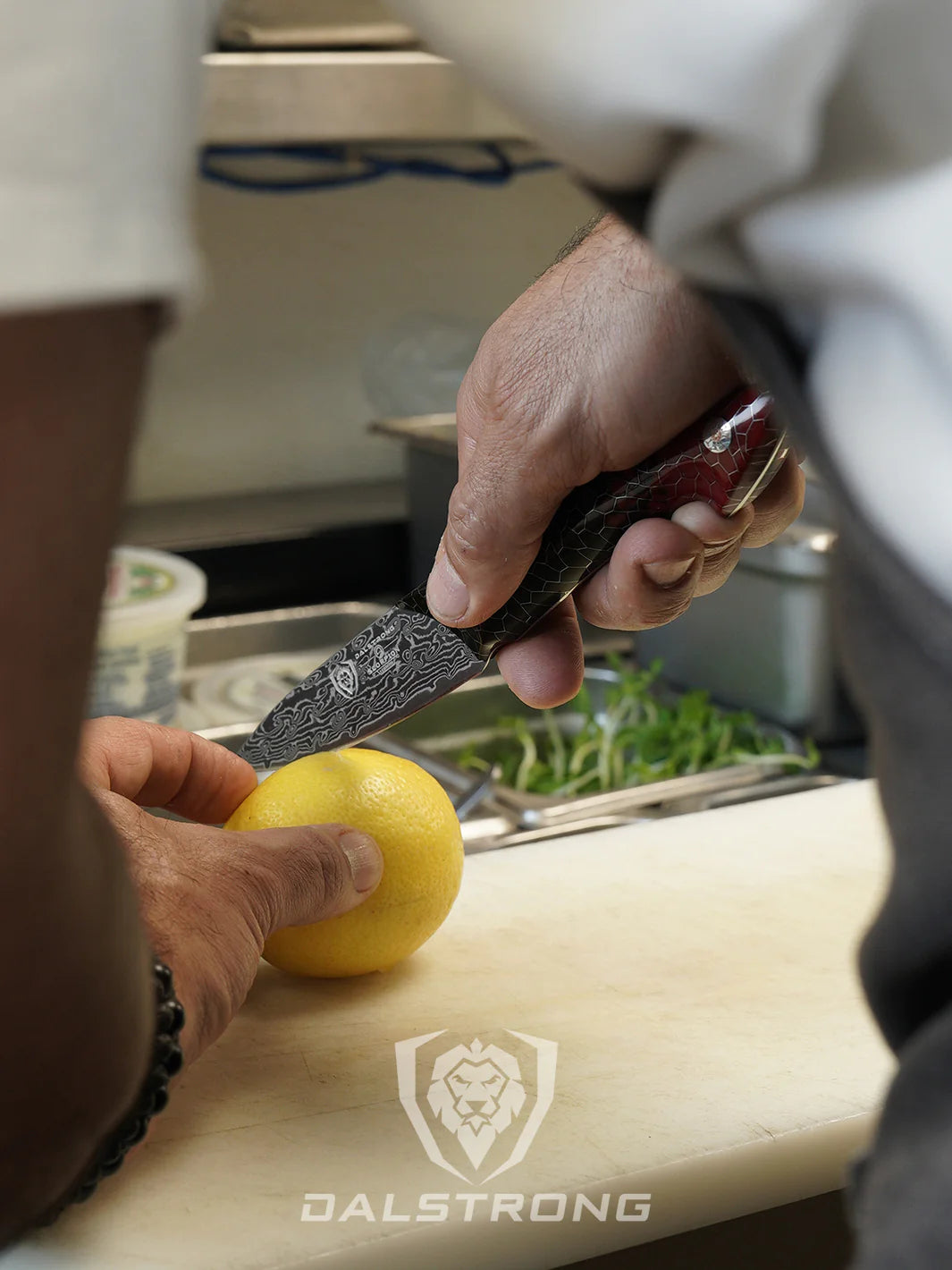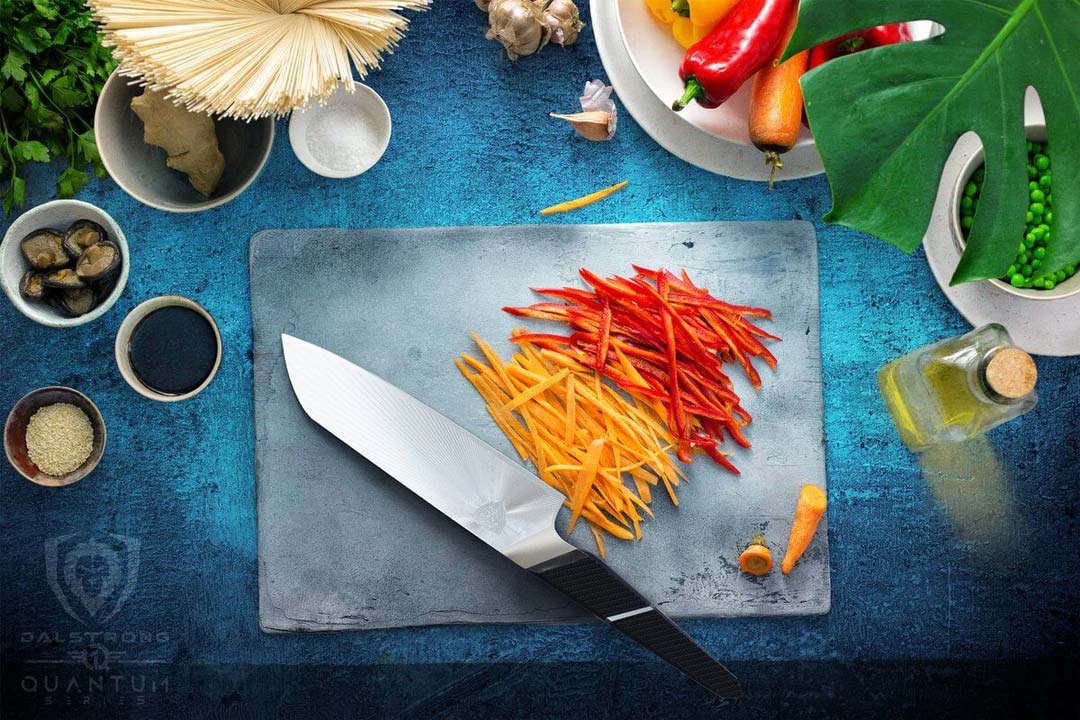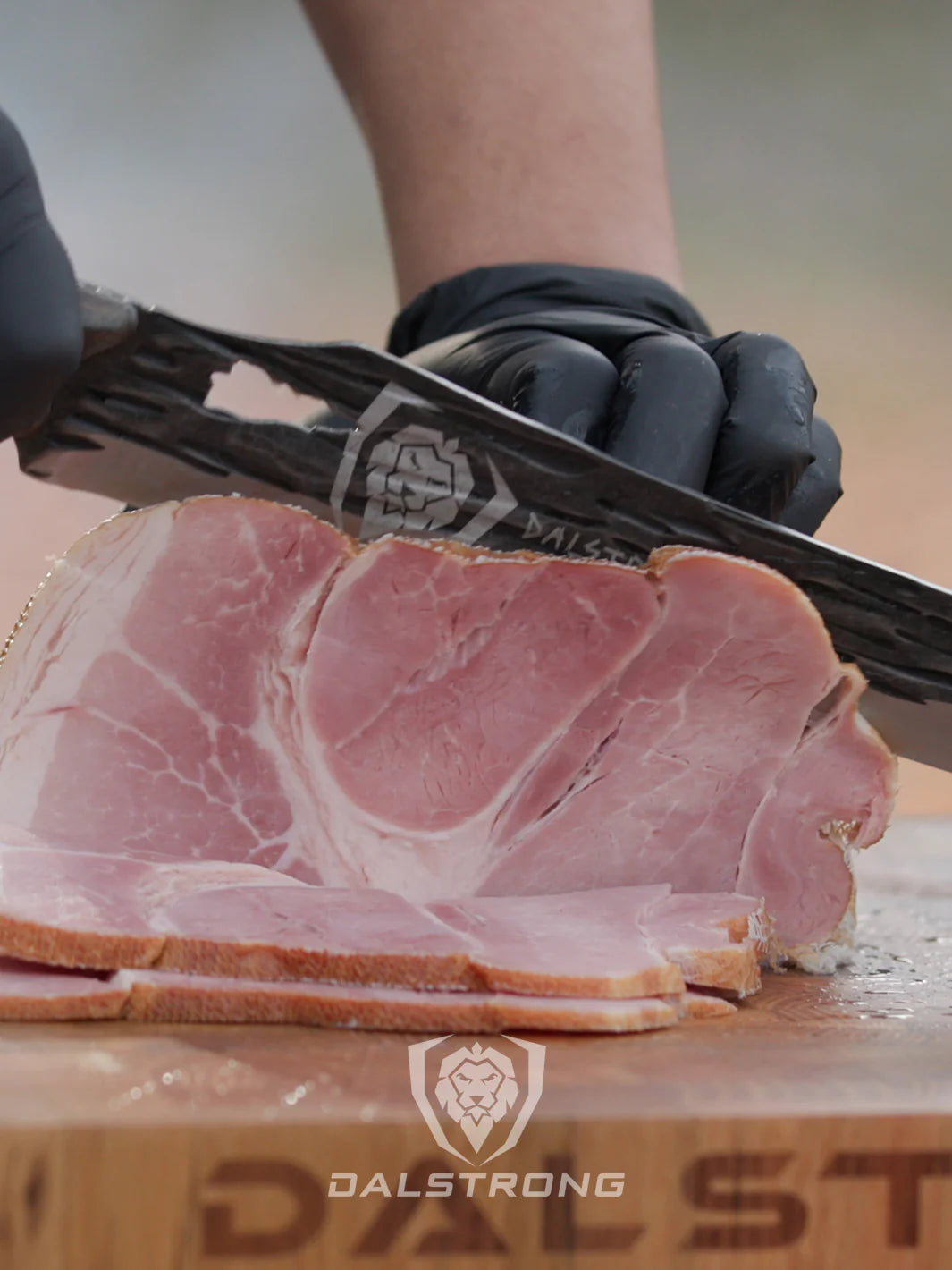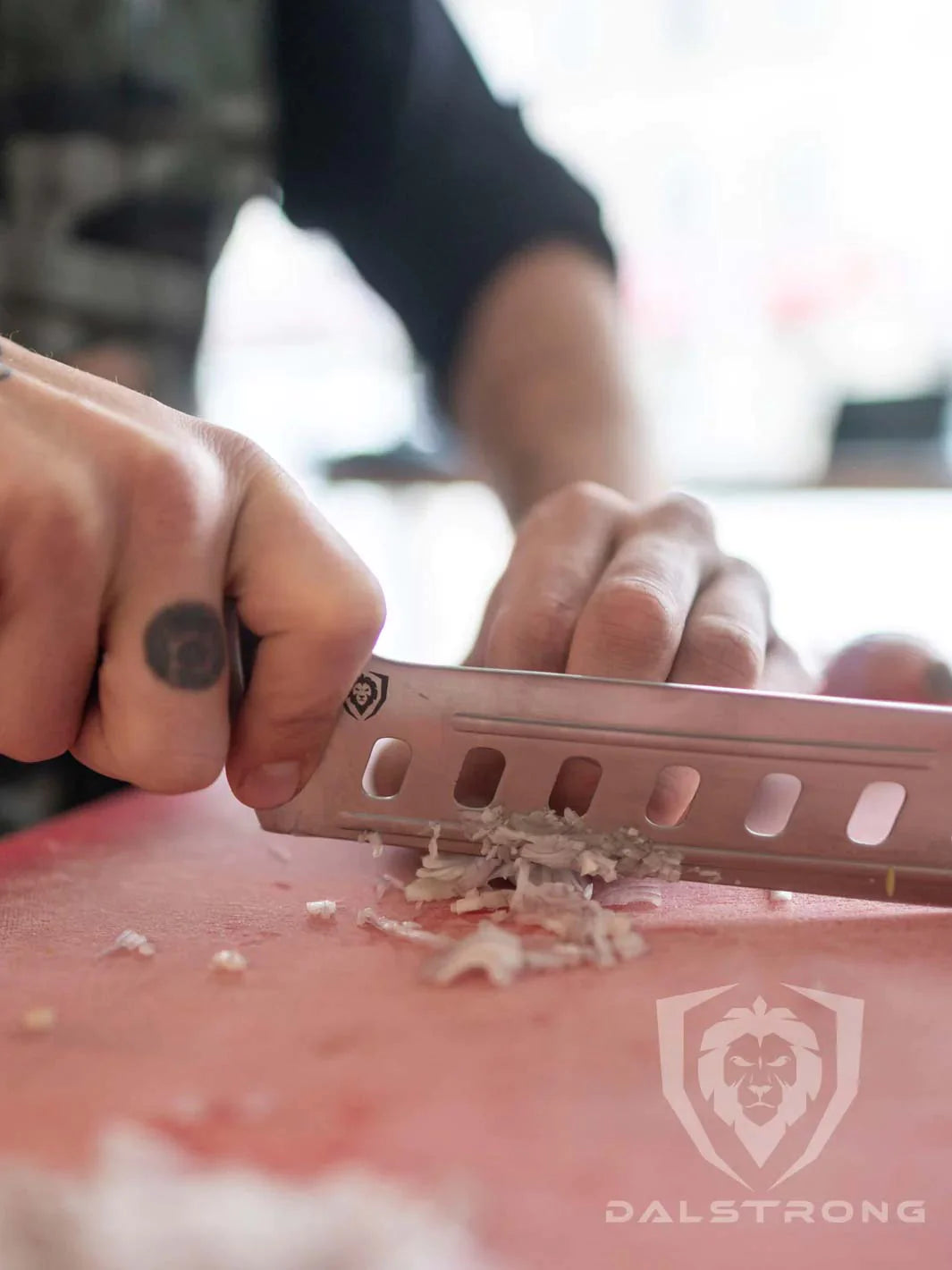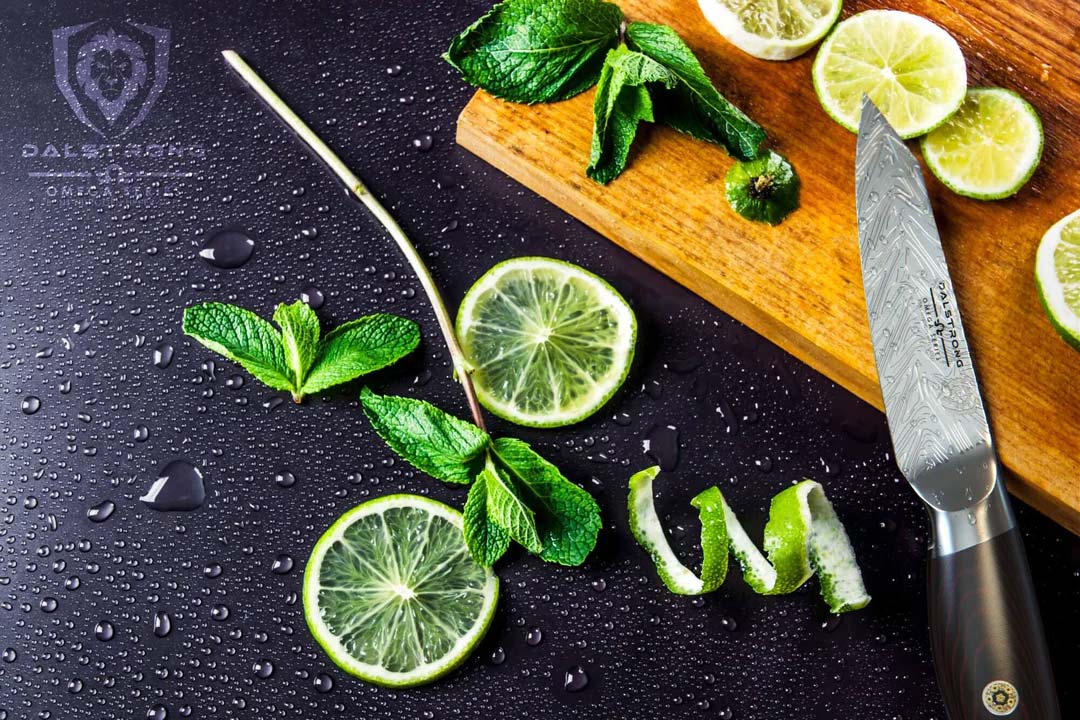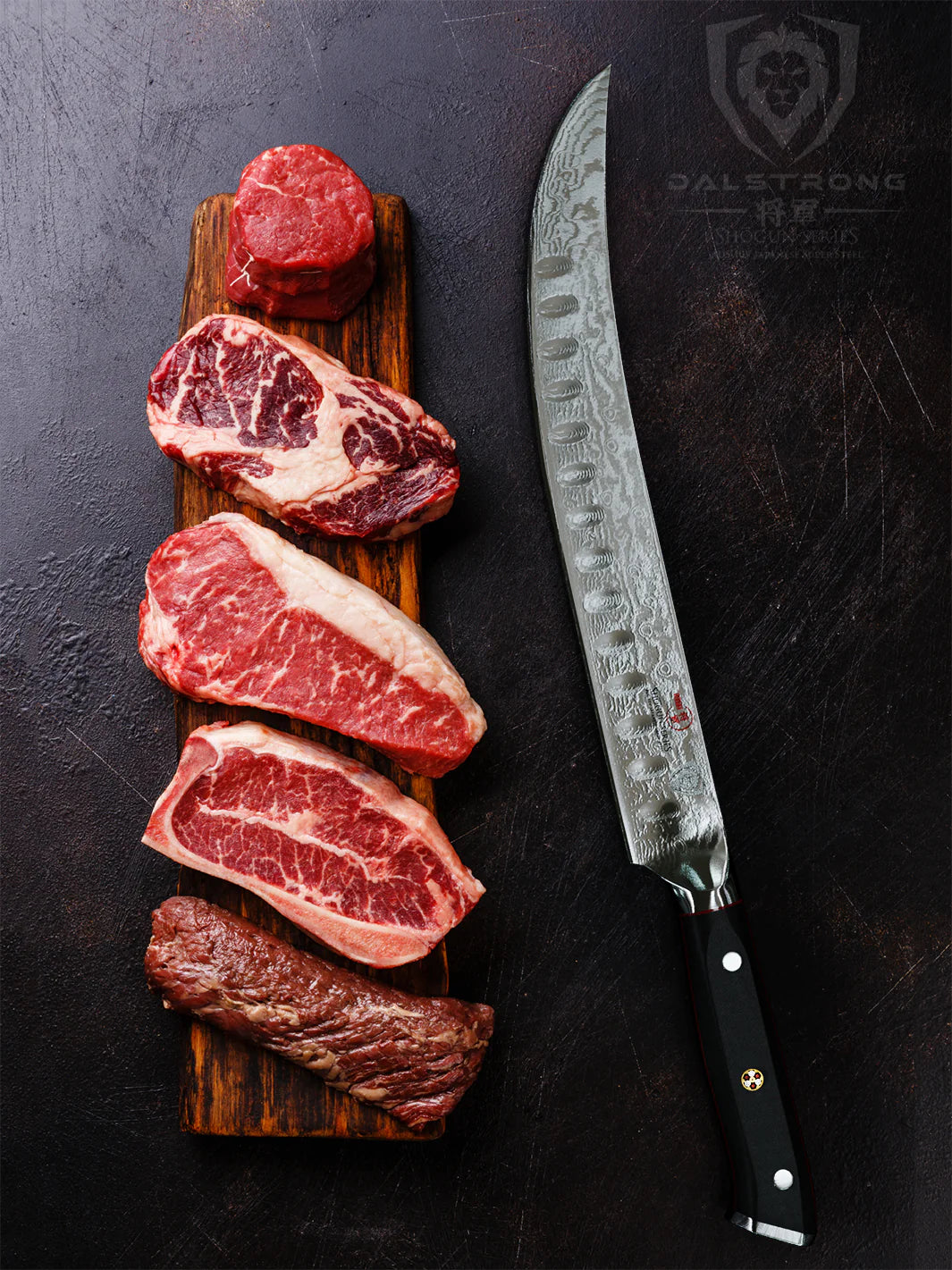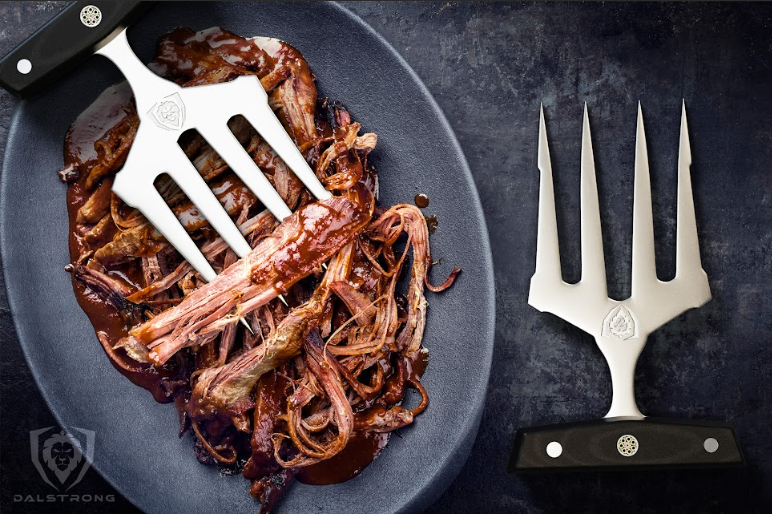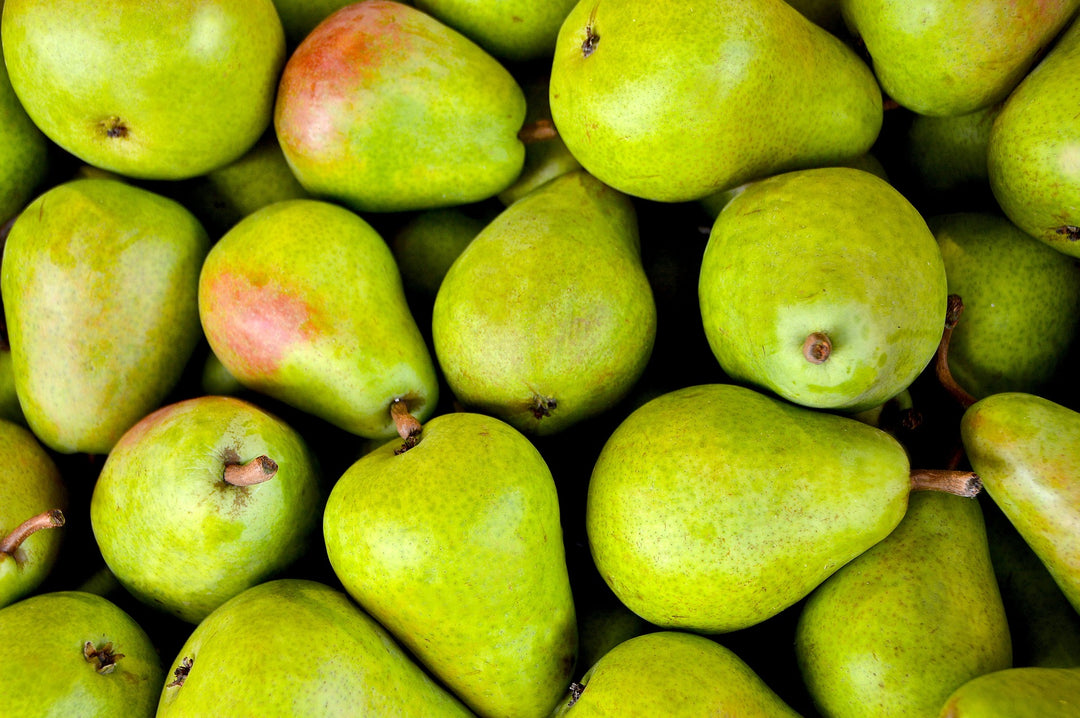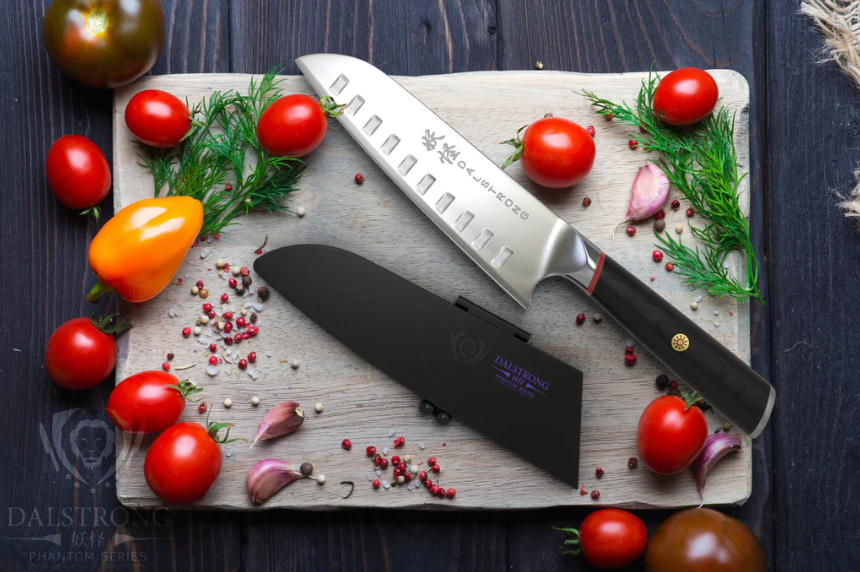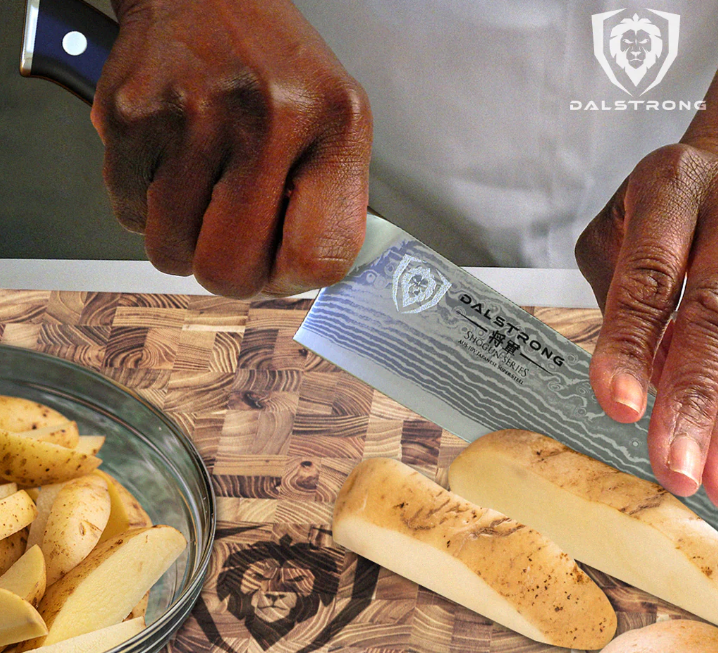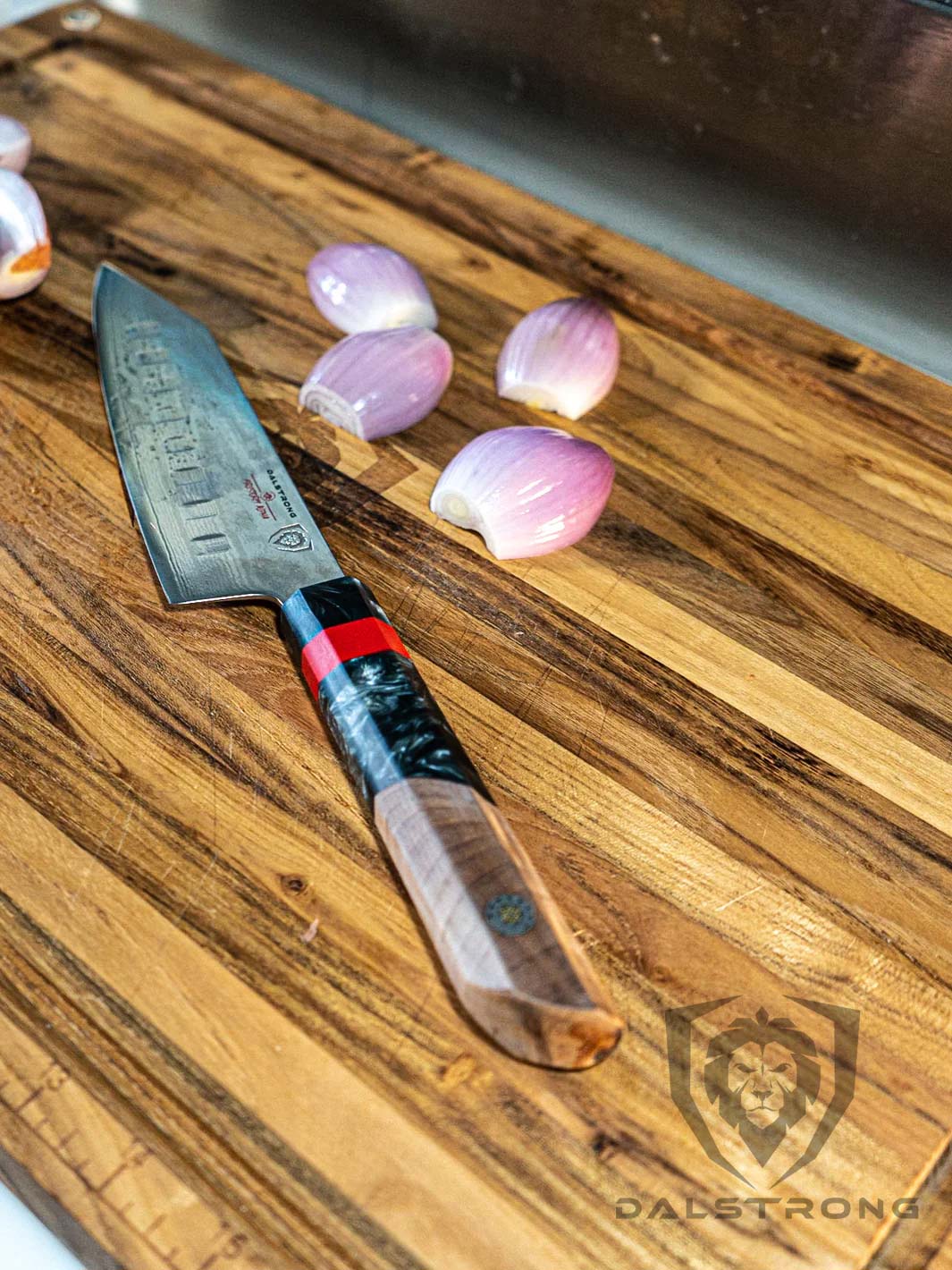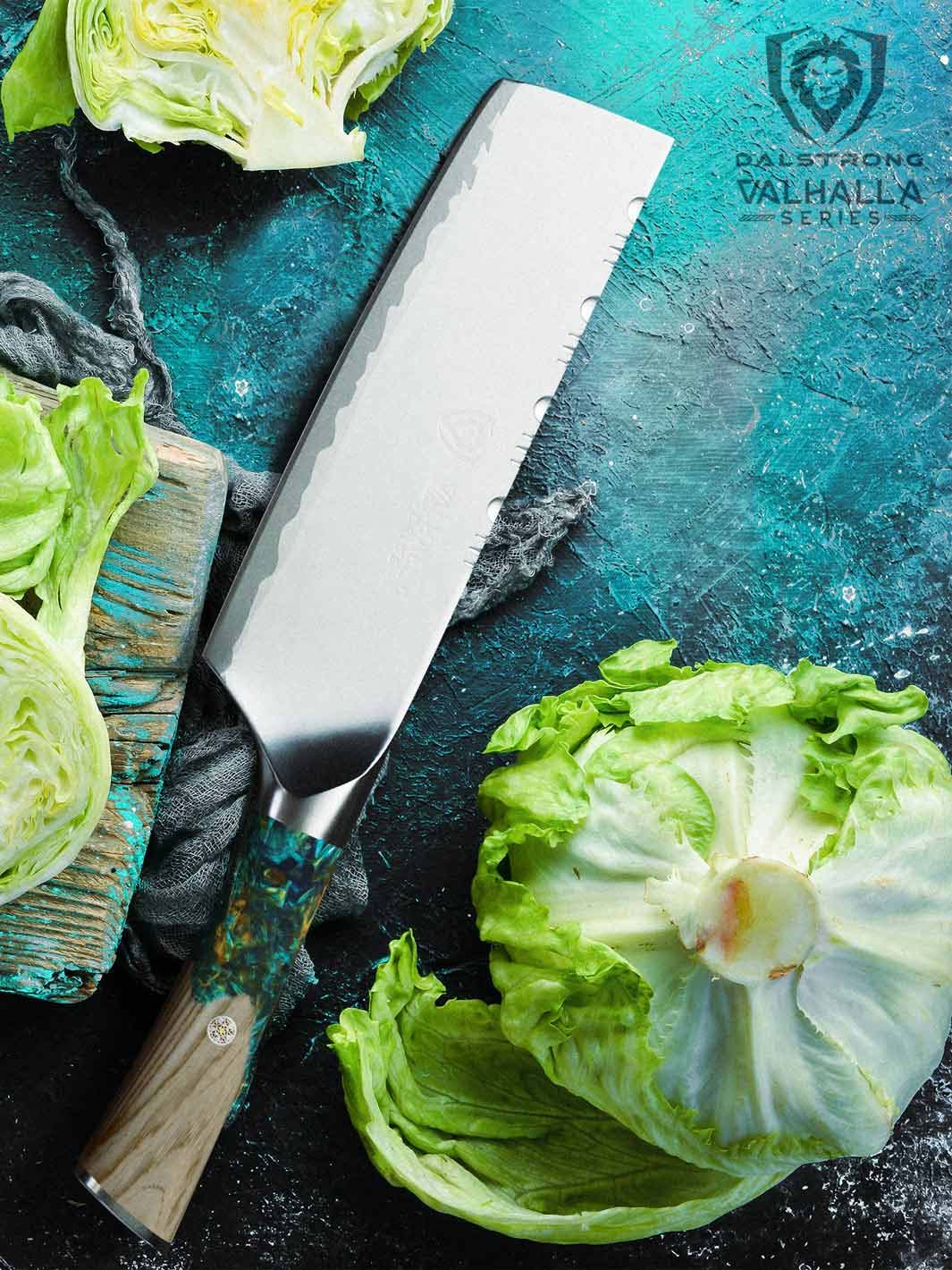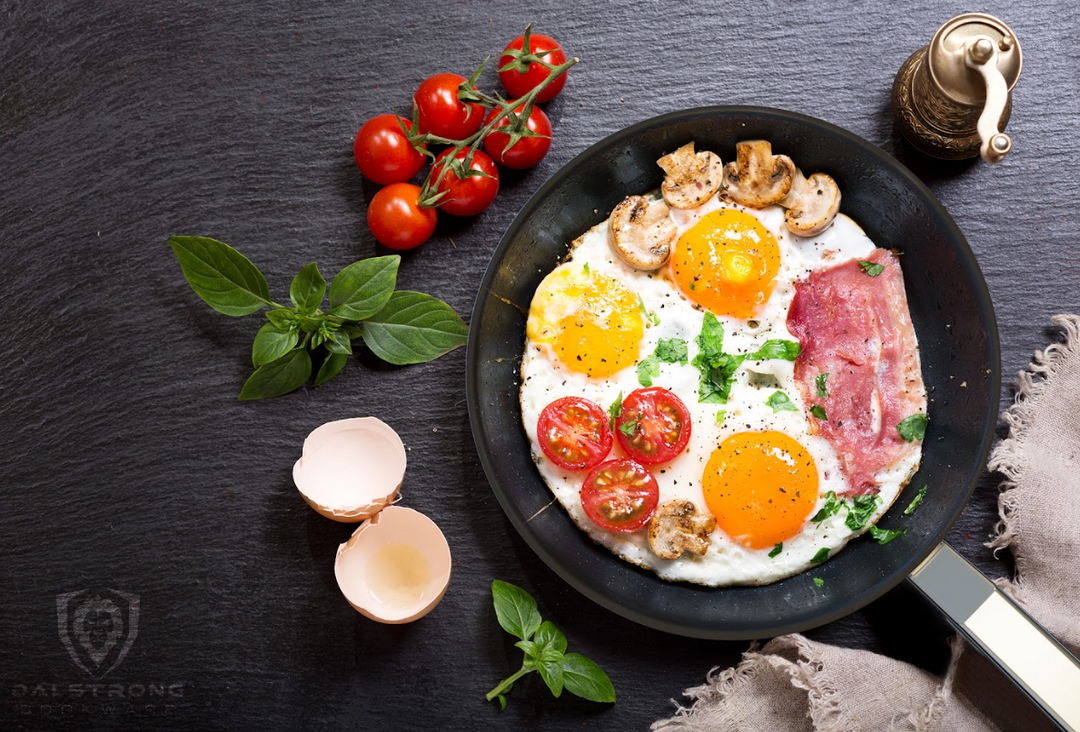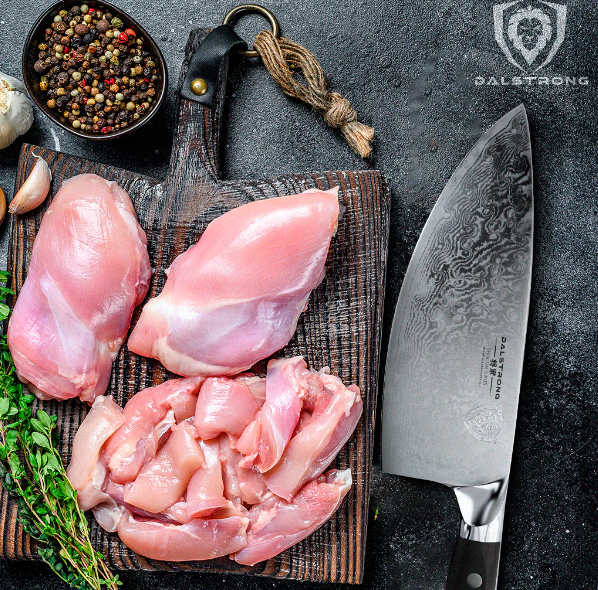All You Need to Know About Brunoise Cut
The brunoise cut is one of the finest types of cuts, derived from the julienne. It's as fine as you can go before you're mincing. Let's explore.
1. What Is A Brunoise Cut?
 Vegetable Chef's Knife 7" | Shadow Black Series | NSF Certified | Dalstrong
Vegetable Chef's Knife 7" | Shadow Black Series | NSF Certified | Dalstrong
The brunoise cut is one of the most important knife cuts in french cooking and a staple in the rich tapestry of french cuisine. The classic brunoise technique is a bit tricky to pull off at first, since it's very easy to overdo it. And there seems to be some confusion as to what actually counts as brunoise; half of our editorial staff was thinking of something else entirely. So let's dispel the myths and get some facts straight.
So what exactly is it?
The Brunoise cutting technique is all about managing sizes. Essentially, it's all about cutting brunoise into exquisitely tiny, uniform cubes of about 1/8 inches in width. If you go any further, you're not technically cutting vegetables anymore, you're mincing. For this all you need a sharp knife and a bit of practice.
But why is there a need for such meticulousness? At the end of the day, all we're doing is cut food. But the reason we take special care is all about the nuance of flavor and aesthetics. Size has profound implications in food preparation. The finer and more consistent the cut, the more enhanced the texture becomes, leading to a harmony of flavors and textures in every bite. Like a tomato concasse, where the brunoise gently coaxes out the delicate flavors, ensuring that each morsel is a burst of freshness. Also a dish sprinkled with these delicate cubes stands out visually, which adds to the presentation value.
2. Various Applications Of A Brunoise Cut

Beyond its visual appeal, the Brunoise cut produce serves a multitude of practical culinary purposes. One of its main uses is in the realm of soup stocks. Employing a sharp knife to achieve a classic brunoise ensures that ingredients like bell peppers, carrots celery, and other vegetables are transformed into small, uniform pieces. These finely cut vegetable pieces not only enhance the visual allure of the broth but also facilitate quicker and more even cooking, releasing their flavors more efficiently.
But of course, the brunoise isn't merely restricted to soups. Its precision, rooted in meticulous cutting techniques, makes it an ideal choice for an aromatic garnish in french cooking and beyond. Picture a plate of delicate risotto or a creamy bisque, crowned with a scatter of vegetable brunoise styled to perfection. The vibrant colors and diced cut texture of the brunoise add layers of complexity to the dish, transforming it into a visual and gastronomic delight.
Looks and flavor!
A garnish like that doesn't just please the palate but also the gaze, making it an instant hit among the fine dining lovers. They appreciate the dedication and skill it takes to produce those uniform pieces, recognizing the classic brunoise as a testament to the chef's commitment to both flavor and aesthetics.
There's a lot you can do with it. This underscores its versatility and importance in the culinary world. Whether it's elevating the profile of a humble soup or garnishing an elegant entrée, the brunoise remains an enduring symbol of finesse and sophistication in cooking.
3. How To Do A Brunoise Cut Efficiently
Alright, home cooks, if you've been dreading actually grabbing your sharp knife and learning how to do a brunoise cut because you think it'll be difficult, here's your wake up call. Precise knife skills are important, but the only way you get them is through practice. So here's a step-by-step guide to mastering the revered brunoise:
- Preparation is key: Start by selecting a fresh, firm vegetable and prepare the vegetable. Wash and peel it if necessary.
- Squaring off: Place the vegetable on a stable surface. Carefully square off the edges to create a rectangle or square shape. This step ensures uniformity and makes subsequent cuts easier. Remember, precision is the name of the game!
- Julienne first: Using your trusty culinary knife cut, slice the squared vegetable into thin planks. Ensure each plank is even and approximately the same thickness for consistency.
- Thin strips ahead: Now, stack a few of these planks and slice them julienne style. You're aiming for long, thin strips, almost like matchsticks.
- Brunoise time: Gather those julienne strips. With a steady hand and a sharp paring knife or chefs knife, dice them finely to achieve the desired fine brunoise style cuts.
- Safety and stability: Always use a firm and reliable cutting board. It provides stability and ensures safety during the cutting process. A non-slip surface is ideal, as it prevents the board from moving around.
There you have it, an easy, systematic approach to achieving a perfect brunoise. Practice makes perfect, so don't get disheartened if your first few attempts aren't flawless. With time and patience, you'll be dishing out impeccable brunoise style cuts that would make any chef proud.
Read about how to store onions so they last longer, here.
4. Dalstrong Tools You'll Need
From sharp knives to cutting boards, here's a list of high quality tools that will make your brunoise that much easier to get perfect.
1. Santoku Knife 7" | Shogun Series ELITE
The Shogun Series 7” Santoku Knife is designed to cater to a variety of cutting styles. The word "santoku" refers to its three main uses: slicing, dicing, and mincing. Whether it's a delicate brunoise or a rough chop, this awesome knife doesn’t discriminate. Let's not forget those divots at the sides that promise minimal friction and excellent food release.
PROS:
- Combining the qualities of both a chef's knife and vegetable cleaver, it provides awesome versatility in the kitchen.
- Made out of high-carbon Japanese AUS-10V Super Steel; it's super sharp and will stay super sharp for longer.
- The G-10 Garolite handle ensures that it'll not only be comfortable but also resilient against heat, cold, and moisture.
- Comes with a protective Dalstrong PerfectFit saya, safeguarding your blade when not in use.
CONS:
- The specific blade geometry might require a slight learning curve for those used to the curve of a traditional chef's knife.
- Some might find its visual design too bold for their taste.
2. Paring Knife 3.5" | Gladiator Series | NSF Certified
Paring knives are perfect for delicate tasks like brunoise cuts. Whether you're carving intricate designs onto your food, peeling fruits, or just need to mince some garlic, this knife is the partner you want by your side. With its ergonomically designed G-10 Garolite handle, you're not only getting a workhorse, but also a piece of craftsmanship that feels right at home in your hand.
PROS:
- Perfect for the intricate brunoise, offering precise and controlled slicing and dicing.
- The G-10 Garolite handle means it's comfortable to hold and feels like an extension of your hand.
- Its tall blade height keeps your knuckles safe, making food prep not just efficient, but also comfortable.
- The blade's hand-polished satin finish doesn't just scream elegance but also promises hardness and flexibility.
CONS:
- With its precision-focused design, it may not be the best for more heavy-duty tasks compared to chef knives.
- Its meticulous design might be intimidating for beginners or casual cooks.
3. Lionswood | Teak Cutting Board | Medium Size
A cutting board is essential for good brunoise style cuts. Not only is this piece made from sustainably sourced, tropical Teak wood, but its design also showcases the kind of attention to detail that makes it stand out in a crowd. From the satin-finished steel handles to the end-grain wood design that promises longevity and durability, this board is your culinary stage.
PROS:
- Made from end-grain Teak wood, this board protects your knives, ensuring they remain sharp after countless uses.
- The checkered construction offers a unique, slip-resistant surface, making your brunoise safer and more precise.
- Not just a cutting board, the steel handles and intricate design make it a perfect serving tray for those dinner parties or family gatherings.
- The lasered measurement lines on the bottom are a boon for chefs who need precision in every slice and dice.
CONS:
- While the medium size is versatile for everyday use, it might be limiting for those large feasts or bigger kitchen projects. If you're looking for something bigger, check out the Lionswood Colossal.
- The unique end-grain design might require a bit more maintenance compared to simpler boards to retain its beauty.
4. Santoku Knife 7" | Delta Wolf Series
Just look at this thing. The onyx-black titanium nitride coating on this amazing knife isn't just for aesthetics; it's there to keep your blade gliding smoothly and resisting corrosion. And if you've ever wished for a knife with as much grip in its appearance as in its handle, the camouflage G10 handle's got you covered.
PROS:
- Offers the finesse of a chef’s knife combined with the might of a cleaver.
- The groove near the spine and the Granton edge ensure the knife stays light, agile, and reduces friction, perfect for rapid chopping tasks.
- Titanium nitride coating and the camouflage G10 handle add durability, resistance, and a touch of stealth to your culinary adventures.
- Comes equipped with a sturdy PU leather sheath, keeping your blade protected when not in use.
CONS:
- The camouflage handle might not exactly fit with your kitchen decor, if that matters to you.
- The straighter edge profile, while excellent for push cuts, might need a bit of getting used to for those familiar with curved blades.
5. Frequently Asked Questions
How do you create a brunoise knife cut?
You create a brunoise knife cut by squaring off the edges of a vegetable, slicing it julienne style, and then dicing those strips into uniform pieces.
What are the 4 basic cuts?
The four basic cuts are commonly understood to be julienne cut, diced cut, brunoise knife cut, and chiffonade.
How do you use brunoise?
You can use brunoise style cuts in soup stocks, salads, tomato concasse, or as an aromatic garnish to elevate the dish.
What foods are cut brunoise style?
Foods like bell peppers, carrots celery, and more are often given the brunoise styling treatment for enhanced texture and appeal.





































































































































































